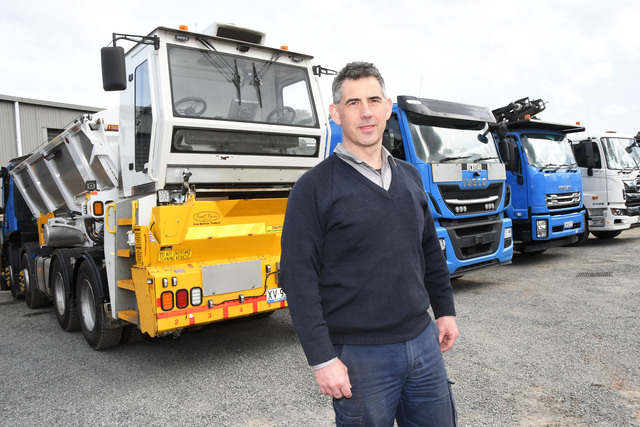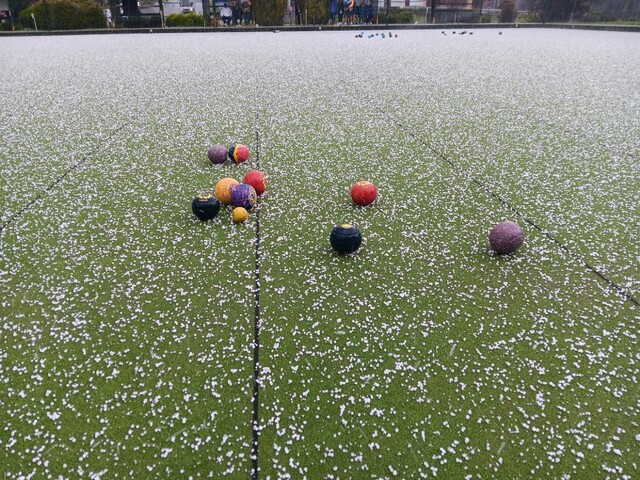A local has raised questions about the Victorian Government’s road maintenance policy as potholes plague the Outer East.
The recent data has revealed the government spent $37 million on road resurfacing works in the 2023-24 financial year, which is a huge drop from the previous year’s $201.4 million.
Quality Fabrication and Engineering is a manufacturer of road maintenance equipment located in Woori Yallock, and the general manager, Glenn Hardiman, claimed that the pothole issue facing drivers would have been greatly reduced if the government had not slashed funding on preventative road maintenance, in particular, road resurfacing and waterproofing.
“Contractors spray bitumen onto the existing road surface, then aggregate crushed rock is spread over the bitumen, this creates a non-slip uniform surface and creates a waterproof seal preventing water penetrating the road and creating potholes,” he said.
“In the last three years, the Department of Transport and Planning has slashed the funding for spray sealing regional roads significantly, and this has exposed a significant proportion of the road network to the winter wet season, which has resulted in an exponential growth in the number of potholes and emergency temporary repair works.
“As we are heading towards the end of winter, it can be revealed that critical road resurfacing activities did not occur over the 23-24 summer. For the first time since the late 80s, our rural road network has not had contracted bitumen surfacing crews actively waterproofing our pavements.”
Road areas resurfaced or rehabilitated in both regional Victoria and outer suburban Melbourne have plummeted over the last five years.
Star Mail contacted the Department of Transport and Planning and confirmed Yarra Ranges roads are not classed as regional roads but as greater metropolitan roads.
Road area per square metre in outer suburban Melbourne resurfaced or rehabilitated has kept decreasing, with 0.729 million square metres in 2022-23, 0.603 million square metres in 2023-24 and the figure dropping to 0.542 million square metres for 2024-25 according to the Australian Flexible Pavement Association.
The following is the road areas resurfaced or rehabilitated in regional Victoria.
2019-20: 18 million square metres, approximately 2400 kilometres of two-lane roads
2020-21: 20 million square metres, approximately 2600 kilometres of two-lane roads
2021-22: 15 million square metres, approximately 2000 kilometres of two-lane roads
2022-23: 9.029 million square metres, approximately 1200 kilometres of two-lane roads
2023-24: 0.343 million square metres, approximately 45.8 kilometres of two-lane roads
2024-25: 3.163 million square metres, approximately 421.8 kilometres of two-lane roads
The figure for 2022 to 2025 has been documented by the Australian Flexible Pavement Association while the figure for 2019 to 2022 has not officially been documented, but Mr Hardiman claimed the number has been collected by Victorian spray seal and maintenance companies.
Mr Hardiman said the government keeps blaming the unprecedented weather events, which is not entirely the case.
“Although the extreme rain in 2022 undoubtedly had an effect on parts of the road network, it is the unprecedented lack of preventative maintenance which is allowing a significant deterioration on the rest of the road network,” he said.
“They [roads] are falling apart, they have not been receiving the necessary preventative maintenance, they just get temporary patches, which is understandable in the wet months.
“Two, three days or a week later, the pothole or road hazard reappears. The biggest concern in the industry is that this lack of preventative maintenance will continue in the upcoming maintenance program, which will only further exaggerate the issue.
“The deteriorating road network is not only an inconvenience to the motorists, the condition of our roads is now a very real safety issue.”
The recent My Country Road survey by the RACV has also proven that many Victorians have the same concern as Hardiman.
According to the survey, potholes and poor road condition were the top issues identified, with an overwhelming 64 per cent of participants identifying these as the primary safety issue, up from 46 per cent in 2021, and improving the road surface ranked the top solution with 60 per cent of participants voting this.
The Melba Highway from Coldstream to Yea received the most responses regarding safety concerns while the Warburton Highway also featured among roads with many safety concerns.
The State Government is investing $964 million this year alone in road maintenance across the state, which will include increased road resurfacing works.
This is part of $6.6 billion over the next 10 years on the roads, allowing the government to plan long-term.
This will help the government future-proof the roads, especially the regional roads, to ensure that they’re equipped to cater to the state’s rapid growth and withstand the rise in major flooding events.
“Following unprecedented flooding and rainfall over the past three years, recent road maintenance programs have focused on rebuilding our most badly damaged roads from the ground up – simply resurfacing roads with damage beneath the surface places them at risk of further degradation and damage,” a Department of Transport and Planning spokesperson said.
“We’re continuing this important work, along with increased road resurfacing, with a $964 million investment in road maintenance this year alone.”







